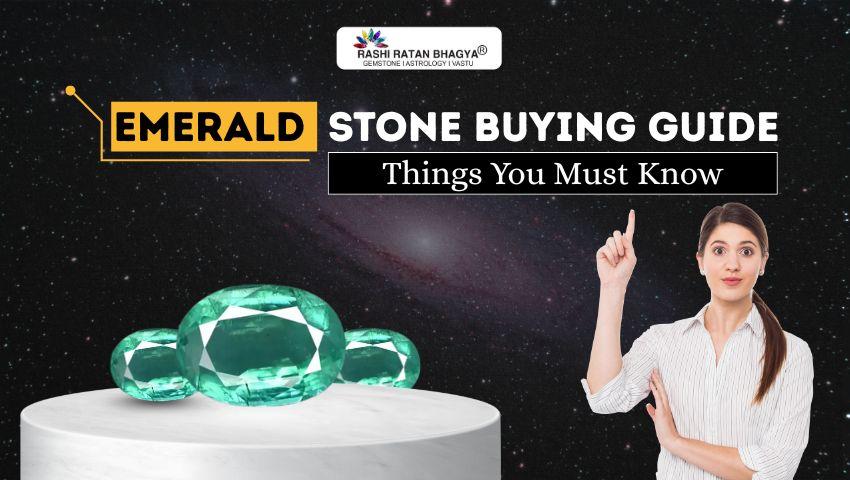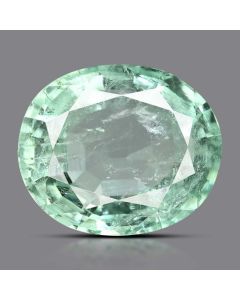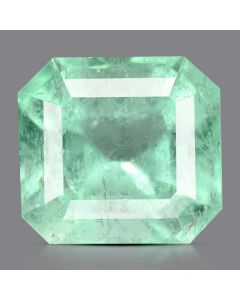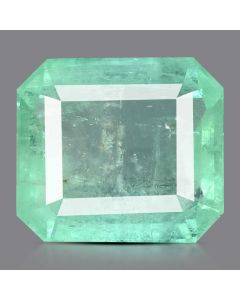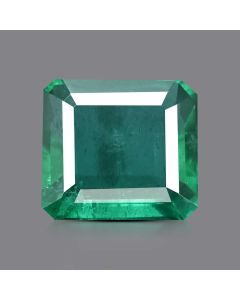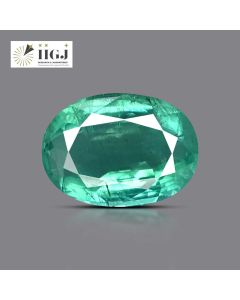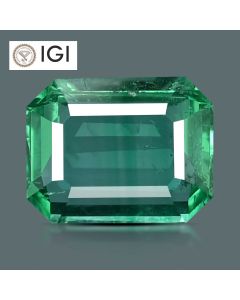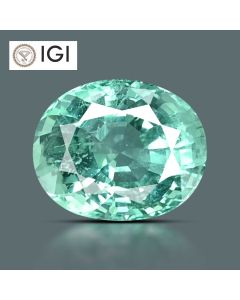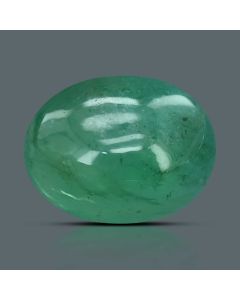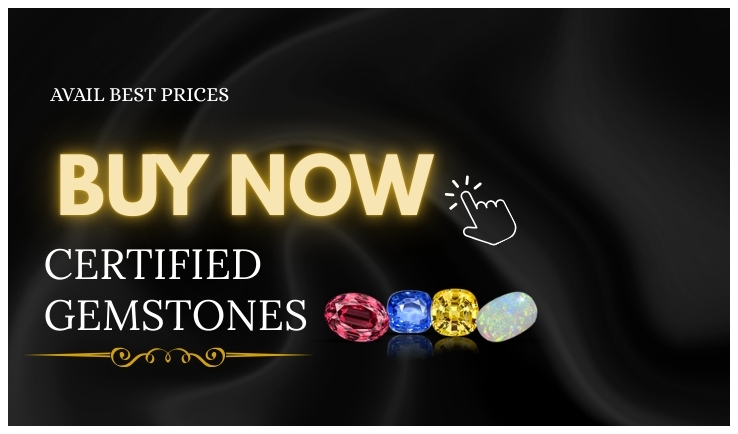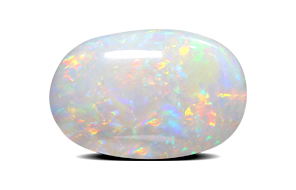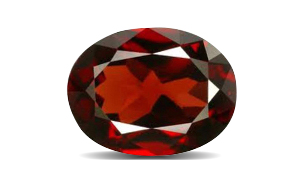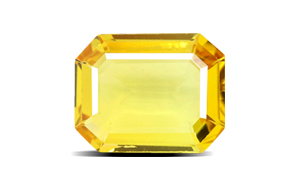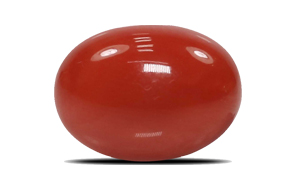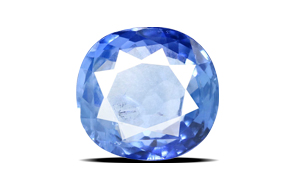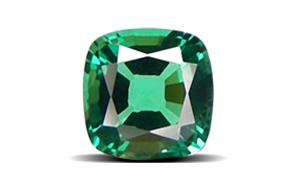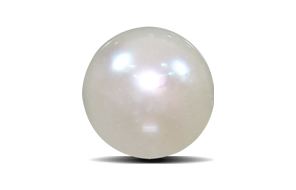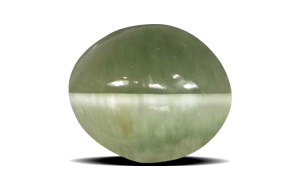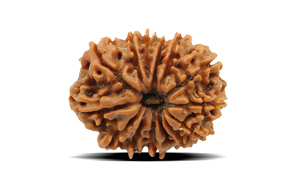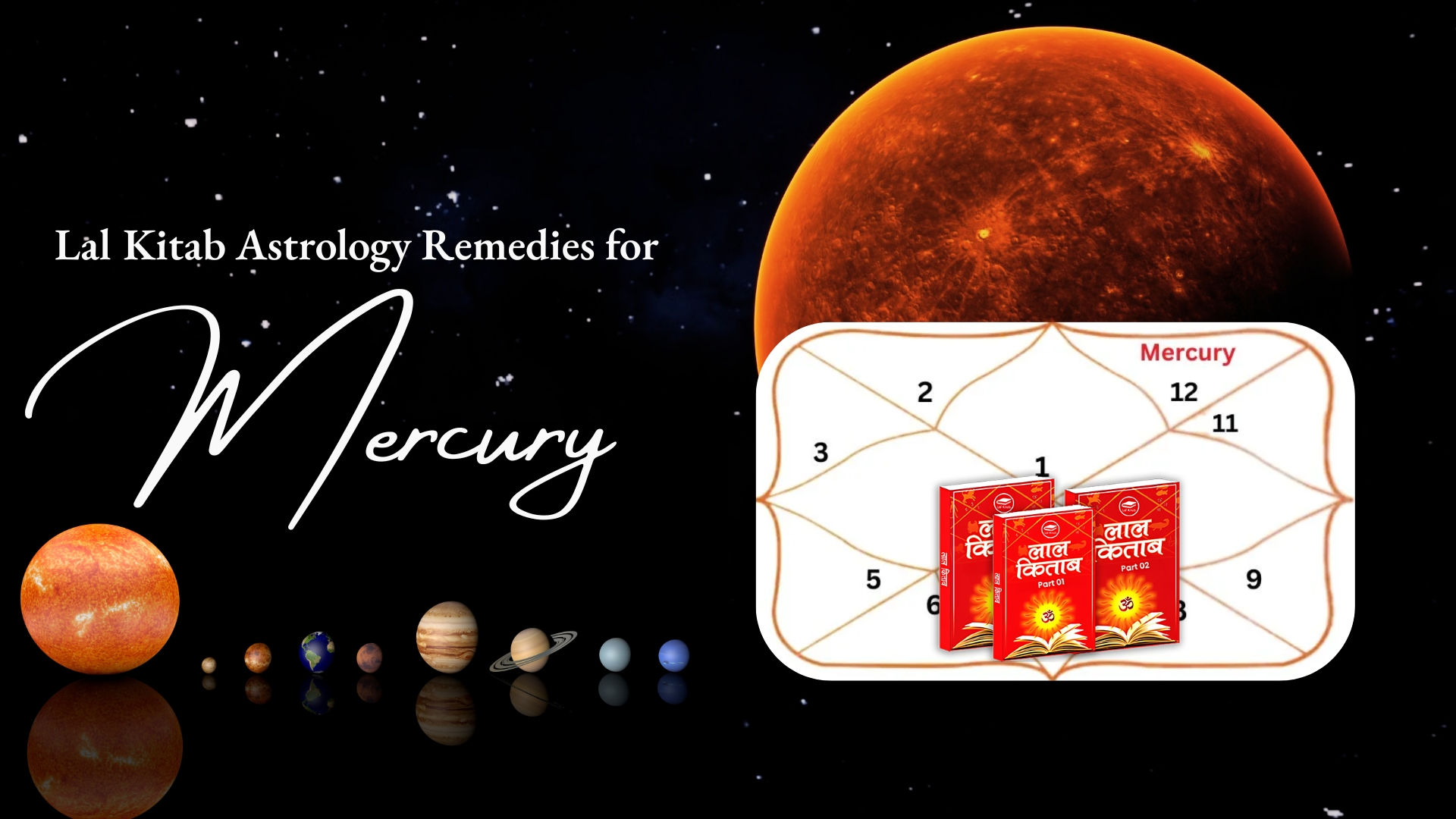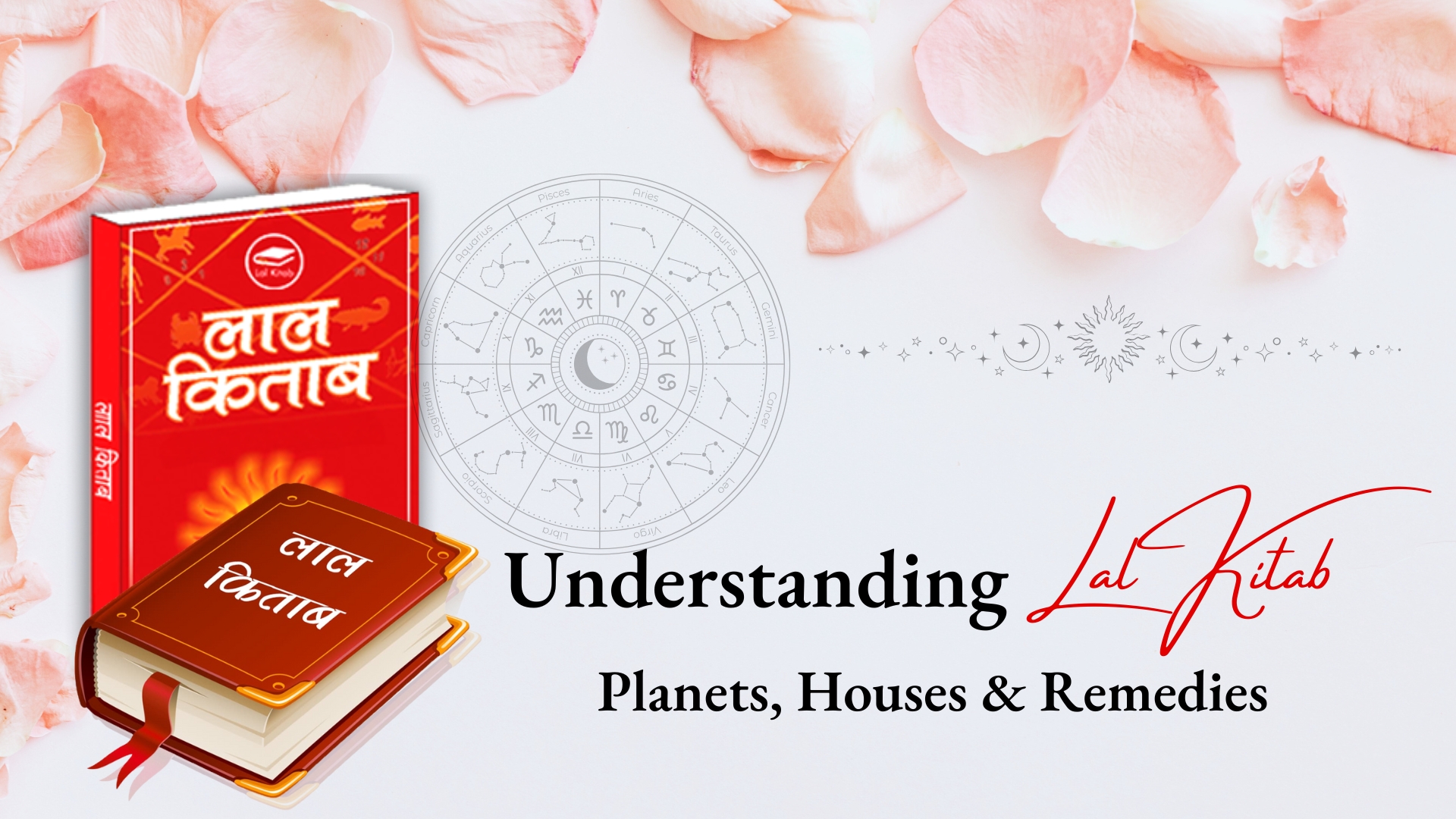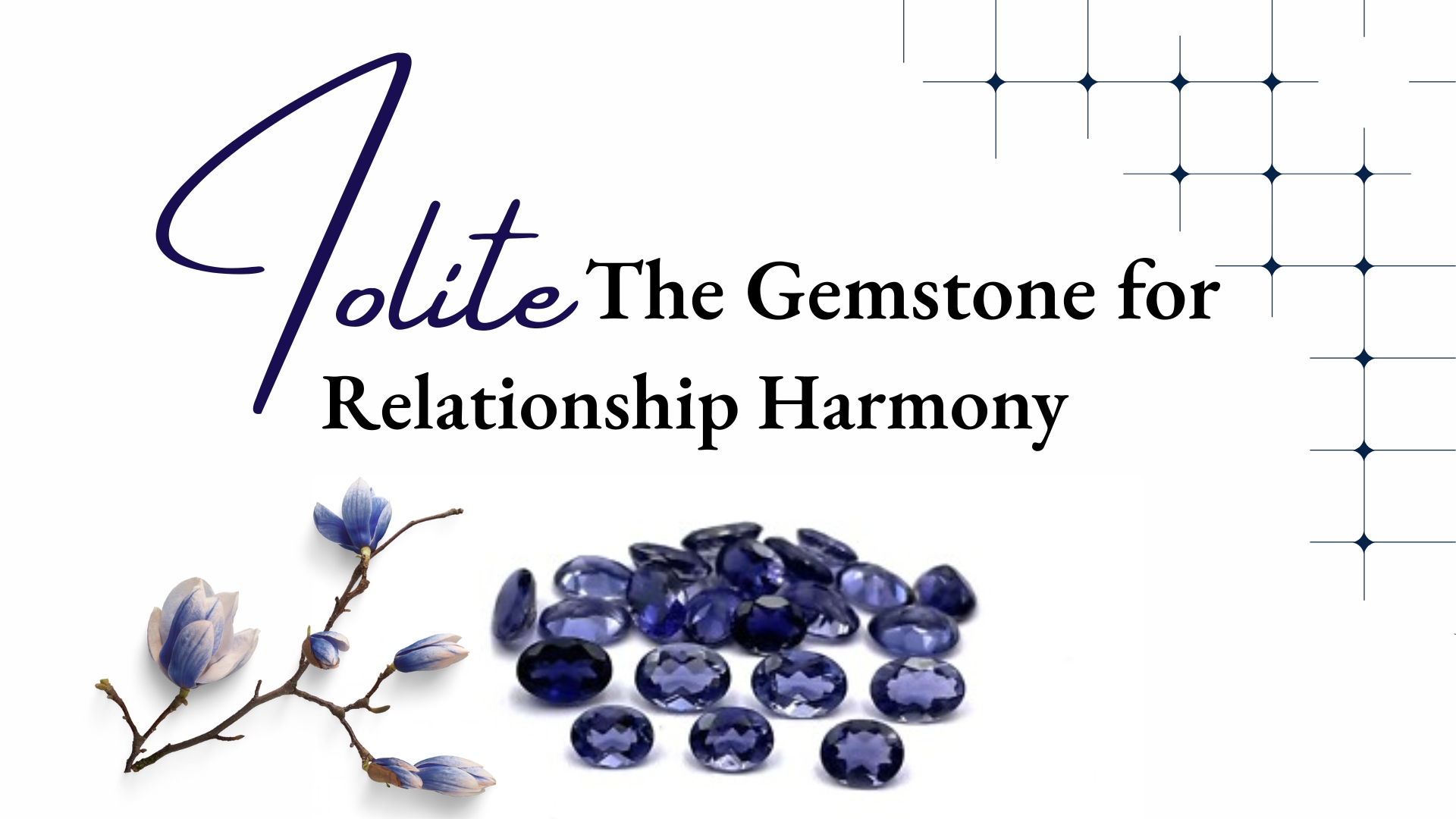For centuries, emeralds have captivated everyone with their rich green beauty. These lovely gemstones symbolise renewal, wisdom, and eternal youth. This gemstone is part of the "Big Three" group of gems, which also consists of Ruby and sapphire. Emerald is a favourite gemstone among collectors and jewellery wearers. It is widely used for its amazing healing and benefits, too.
But purchasing a genuine emerald stone is not as easy as you might think. Like their value, emerald prices are influenced by a handful of factors, such as colour, clarity, cut, carat weight, origin, and treatments. Without proper knowledge, one might easily choose a lower-quality stone or overpay for the gem. In this Emerald Buying Guide, we'll cover everything you need to know to make an informed and confident purchase, whether you're investing, gifting, or selecting a stone for astrological purposes.
Basic information about Emeralds
Emeralds are green colored gemstones that belong to the beryl mineral family. Emeralds get their green colour from trace amounts of chromium, vanadium, or both present in their chemical structure. Emeralds are found in numerous parts of the world, such as Colombia, Zambia, Brazil, Africa, Russia, and Afghanistan. But the best-quality emeralds are generally found in Colombia and Zambia.
Emeralds are very tough gemstones with a Mohs hardness of 7.5-8, making them helpful in crafting a wide range of ornaments and decorative pieces. In the case of diamonds, clarity is often a prime consideration, because they are generally spotless and flawless. But, emeralds typically have visible inclusions (tiny imperfections). But these flaws are not discouraged; in fact, they are embraced and admired because they tend to enhance the emeralds' natural beauty. But too many imperfections or flaws might decrease its clarity and durability.
According to Vedic astrology, it is associated with the planet Mercury and helps to strengthen the position of Mercury in the horoscope of the wearer. It is believed that wearing this gemstone enhances the wearer's wisdom, communication skills, and financial stability.
Origin of Emeralds
Geographical origin is the most crucial factor to check before buying any gemstone. The same is the case with emerald; the origin of emerald can significantly impact its value:
Significant sources of emeralds include:
- Colombia: Colombia is famous worldwide for producing the finest emeralds. These emeralds are commonly found and mined in the regions of Muzo, Chivor, and Cosquez. The Colombian emeralds possess a vivid, pure green hue.
- Zambia: The Zambian emeralds have a unique, slightly bluish-green colour combined with excellent clarity and saturation.
- Brazil: The emeralds found in Brazil are commonly light green. The quality that separates them from other emeralds is their unique yellowish tint.
- Afghanistan: The emeralds found in this region are known for their high quality, but supply is limited. The Panjshir emeralds are renowned worldwide for their exceptional quality and clarity.
The Four Cs of Emeralds: Colour, Clarity, Cut, Carat
The quality and price of an emerald gemstone are evaluated based on the 4Cs: colour, cut, clarity, and carat weight. We have discussed these factors in detail below:
Colour of Emeralds:
Colour is the most critical factor in determining a gemstone's overall quality and market price. The colour of an emerald has three primary attributes: Hue, Tone, and Saturation. An ideal emerald exhibits:
- Hue: Normally, the best quality emeralds display a Pure green or bluish-green hue.
- Tone: The most expensive and highly demanded emeralds generally have a Medium to medium-dark tone, which means they are neither too light nor too dark.
- Saturation: The best-quality emeralds exhibit a vivid, pure green colour. This gemstone generally has very few, if any, overtones. This means their green colour is intense and is not muted by other colours like grey or yellow.
When it comes to the quality of emeralds generally, the Light-colored emeralds are considered less valuable, even if they're eye-clean. On the other hand, it is believed that a rich, deep green can dramatically increase the price of the gem, even if the stone has visible inclusions. Therefore, you should always examine emeralds under natural light. Artificial lighting can exaggerate or mute the emeralds' actual colour.
Clarity of Emeralds
The clarity of an emerald is also an essential factor to consider before buying a genuine gemstone. Emeralds are known to contain few visible inclusions within their structure, which is called "jardin," the French word for garden. A completely clear emerald is challenging to find, and they command heavy prices in the market.
When buying, look for emeralds that are:
- Eye-clean and have no prominent inclusions visible to the naked eye.
- Free from inclusions that affect durability, like deep surface cracks.
Minor inclusions that don't interfere with beauty are generally acceptable and even desirable for authenticity. Be wary of emeralds that look suspiciously clean and flawless. They might be synthetic or heavily treated.
Cut of Emeralds
When selecting a high-quality emerald, the gemstone's cut is also a factor to consider. The cut of an emerald enhances its overall colour while minimising visible inclusions and flaws. The most common shape of emeralds is the emerald cut. In addition, it is sometimes cut into a rectangular step cut, which flattens the stone's colour and brilliance while protecting it from damage. Oval, pear, and cushion are other popular cuts. A good cut on an emerald will have light reflecting evenly across it, and you should not see dark or dull spots.
Carat weight of Emeralds
Typically, emeralds are denser than diamonds, so a 1-carat emerald may appear smaller in size than a 1-carat diamond. It must be noted that finding large, high-quality emeralds is very difficult. This makes them rare and significantly increases their market share. While selecting an emerald, you should not only focus on the size but also on the quality of the gem. Because sometimes a large stone with too many inclusions may be cheap, but a small gem with outstanding clarity and colour may be expensive
Natural vs Treated Emeralds
Most emeralds available on the market today are treated, enhancing their overall appearance and beauty. The most common treatment applied to emeralds is oil filling, in which tiny fissures are filled with colourless oil (usually cedarwood oil) to improve clarity. In addition to this, various other treatments might also be used on emeralds; some of them are enumerated below:
Other treatments include:
- Resin filling: In this process, synthetic resin is used to fill the cracks or emerald in the place of natural oils.
- Dyeing: This process involves injecting a colour dye to mask paleness or discolouration (less desirable).
Before buying an emerald, you should always ask for disclosure about treatments performed on it. Reputable sellers will provide this information and, if necessary, certification.
Treated emeralds are perfectly acceptable, but they should be priced accordingly. Untreated, vivid green emeralds are extremely rare and command premium prices in the market.
How to Read an Emerald Certificate
A good-quality emerald generally comes with a gemstone certificate issued by a recognised gemstone laboratory, such as IGI, IIGJ, IGITL, or GSI. The certificate of an emerald should clearly mention the following information correctly:
- Whether the emerald is natural or synthetic.
- Degree and type of treatments (if any).
- Colour, clarity, cut, and carat weight.
- Origin (if determinable).
Standard terms you'll see regarding treatments:
- None: No enhancements detected (very rare).
- Minor: Minor oil/resin treatment.
- Moderate/Significant: Moderate to heavy oiling/resin filling, which should lower the price.
Emerald Pricing
Emerald prices vary based on their colour, clarity, carat weight, and origin. High-quality emeralds are expensive, and deep discounts often signal heavy treatments or synthetics. Colombian emeralds generally cost between Rs 5000 and Rs 100000 per carat. On the other hand, the Zambian emeralds might cost between Rs 2500 and Rs 70000 per carat, or more, depending on their quality.
Buying Tips: Dos and Don'ts
Do:
- Buy from a reputable dealer specialising in coloured gemstones.
- Always ask for a certificate verifying authenticity and treatments.
- Set a budget, but be flexible if you find a stone you love.
- Inspect in natural daylight to assess actual colour.
Don't:
- Assume bigger is better. A smaller, high-quality emerald is far more valuable than a larger, dull stone.
- Skip insurance, especially for valuable emerald jewellery.
- Neglect to ask about return or exchange policies.
Conclusion
Buying an original, certified emerald gemstone is not easy. It takes a lot of time, patience, knowledge, and skill to select the highest-quality gem, so you get complete value for your money.
When buying an original emerald gemstone, prioritise its colour above all, accept minor inclusions, and always ask about treatments and certificates. An emerald chosen wisely can be a timeless treasure, whether as jewellery, a personal talisman, or an heirloom to be passed down through generations.
If you are looking for the best gemstone company to buy a genuine emerald, then RashiRatanBhayga is the best option. It is India's leading gemstone and rudraksha-selling company. They only sell certified and natural precious and semi-precious gemstones at affordable prices. In addition to this, they also provide astrological services so that you can get your horoscope checked and get the necessary advice for wearing the gemstone according to your planetary position.
About The Author
Mr. Bharat Sharma, the head of the Digital Media team, has over 15+ years of experience in online media. He plays a vital role in developing strategy, ensuring quality, and providing support to customers. Highlights the experience and dedication to online marketing with natural crystals. He contributes the digital marketing knowledge to Rashiratanbhagya. Mr Bharat Sharma blends digital innovation with the ancient Vedic wisdom.

